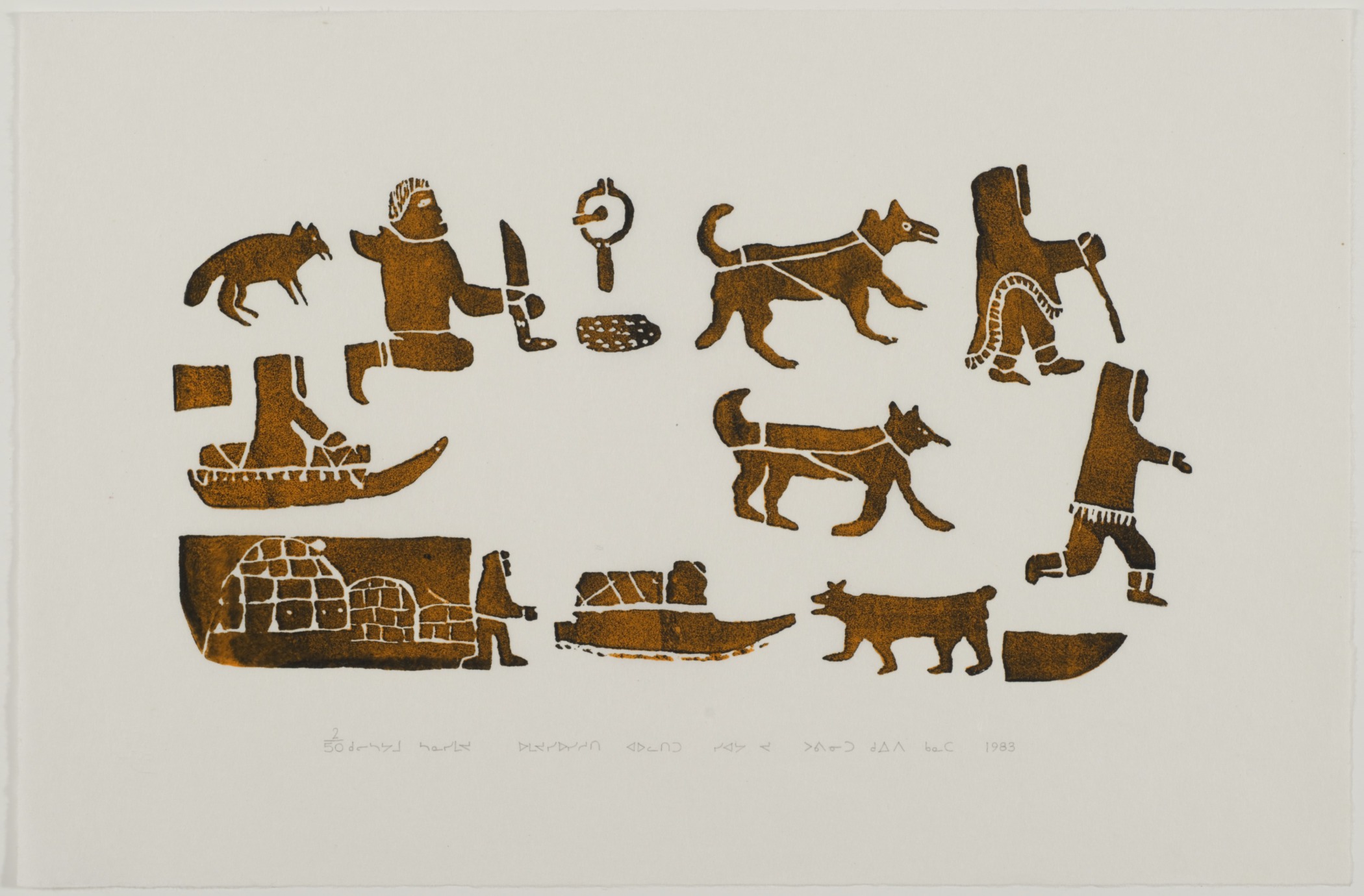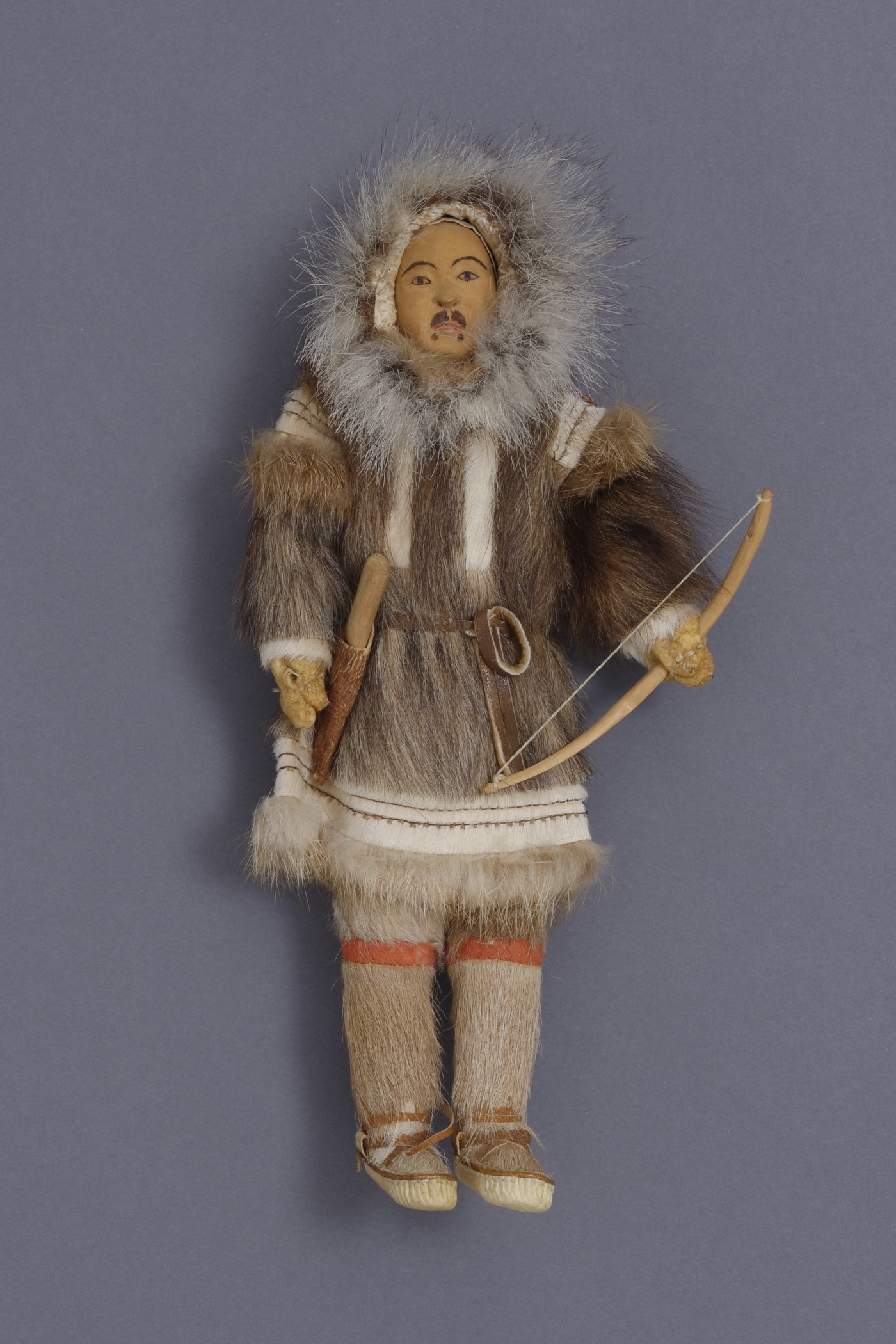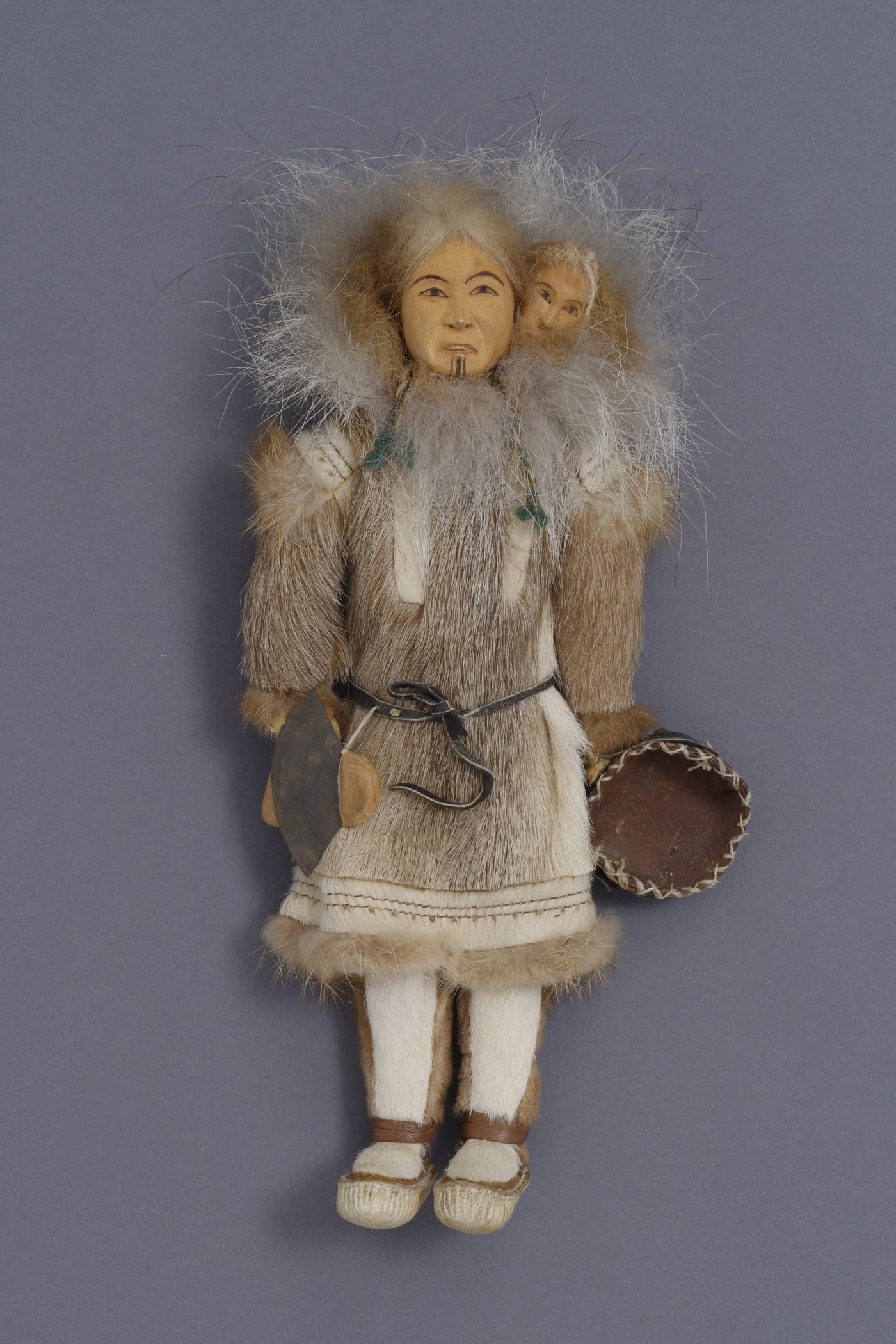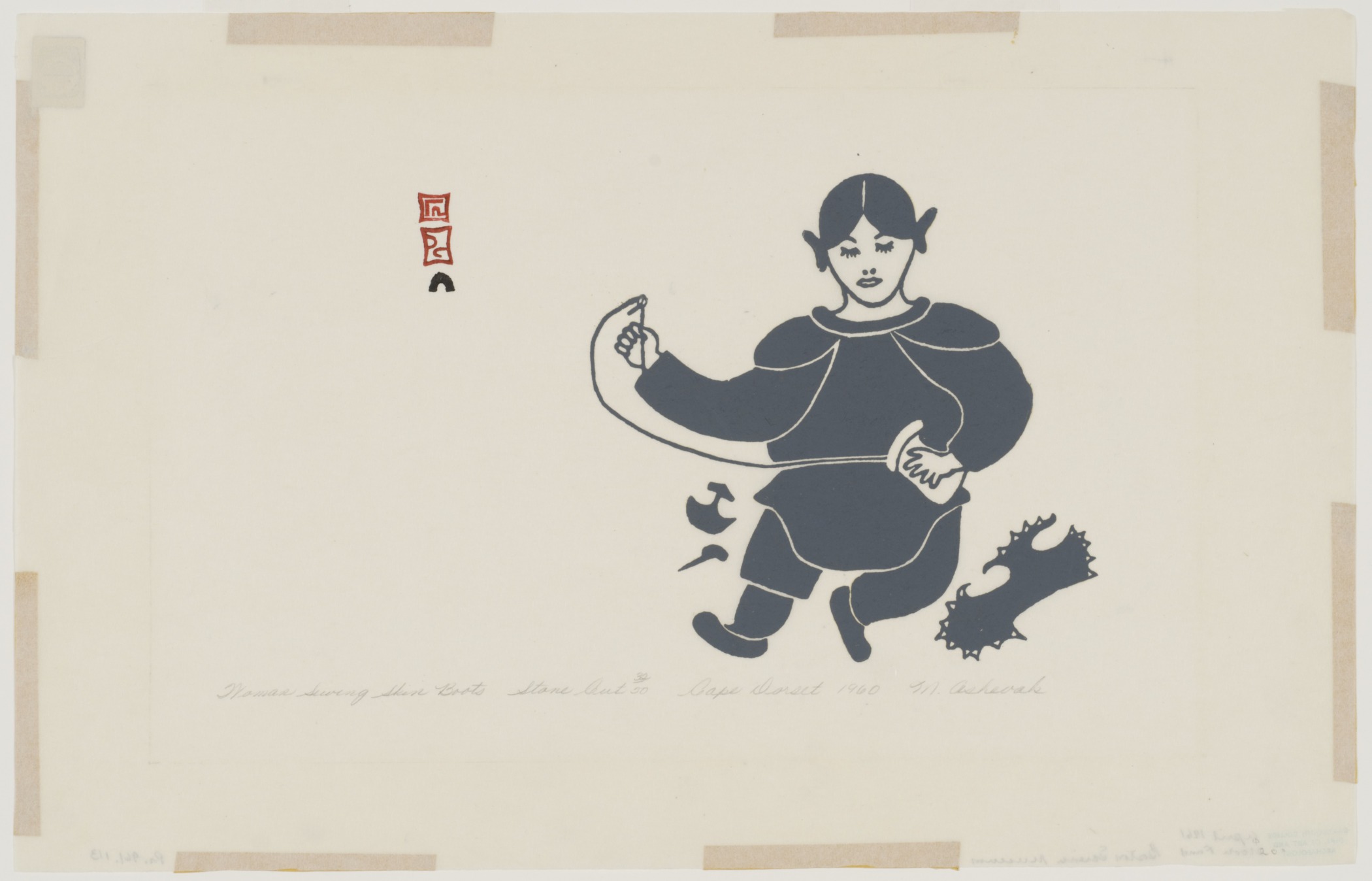Sarah Joe Qinuajua, Canadian (Inuit), 1917–1986
Annie Amamatuak, Canadian (Inuit), born 1933 (printmaker)
Ready to Leave for the Hunt
- 1983
- Stonecut print on paper
- 13 1/8 × 20 in.
Hood Museum of Art, Dartmouth College: Gift of Jane and Raphael Bernstein; 2011.64.17
visibilityLook & DiscussThis print by Sarah Joe Qinuajua (Kin-OH-you-ah), a Canadian Inuit artist, is filled with information about the roles of each family member at winter camp.
explore the object
The kneeling father figure holds a special man’s knife, used for cutting blocks of snow for an igloo, and also for butchering animals. A fox and a fox or bear trap appear on either side of him. Below the trap is a seal breathing hole or a hole for ice fishing. All of these details tell us that it is his responsibility to hunt in order to provide food and other necessities through trade for his family. It is also his responsibility to build the igloo, which appears in the lower left of the print, and which will serve as shelter for the family during the winter hunt.
On the right, the mother figure wears a mother’s parka known as an amauti, with a shaped front and back and a large hood for carrying a small child. She walks forward with a stick, checking the thickness of the ice.
Below, one child rides on a komatik, or dogsled, while another child runs ahead. The children are free to play while they are young, but they learn while watching their parents engaged in their respective tasks.
Also included in the print is another komatik, laden with items necessary for winter camping, and a polar bear. The isolated shapes on the field of white paper effectively communicate a sense of landscape, where figures appear silhouetted on the white ground of ice and snow.
Meet the Artist
Sarah Joe Qinuajua grew up in various hunting camps in northern Quebec and moved into the settlement of Puvurnituq in her early forties. Her subjects tend to be drawn from memories and experiences of her youth living on the land. The expression “on the land” is derived from the Inuktitut word nunamili, which refers to the seasonal migration of the Inuit as they followed the animals on which they depended for survival. Historically, Inuit families lived in camps and igloos on the ice in winter in search of fish, seals, walrus, and polar bears. They moved inland into skin tents in the spring and summer to fish and hunt caribou. Living “on the land” also implies the Inuit practice of taking what they needed from nature: animals for food, their skins for shelter and clothing, and stone for tools and cooking pots.
related object
Margaret Toodlik Amarook, Canadian (Inuit), born 1942; Publisher: Sanavik Cooperative, Baker Lake, Skin Tents, 1971. Stonecut print on paper, edition 24/25, 14 15/16 × 20 3/16 in. Hood Museum of Art, Dartmouth College: Gift of Willy E. Gorrissen; 179.17.25859.
Compare the print Ready to Leave for the Hunt to this print by Margaret Toodlik Amarook that shows a summer camp scene. Just below the cone-shaped tents covered with caribou hide, a woman tends a kudlik, or Inuit stone lamp, behind which may be a windbreak. Nearby is the head of a caribou and possibly a sealskin. She has an ulu, a tool with a semicircular blade for skinning animals and preparing hides.
What are the woman’s responsibilities in this camp?
Even though men are not featured in the image, where do we see evidence of their responsibilities?
Learn More
In these videos, Inuit scholar Heather Igloliorte shares her thoughts on these images.




